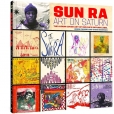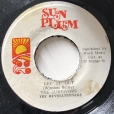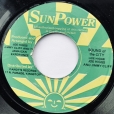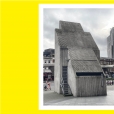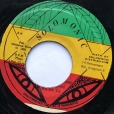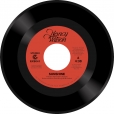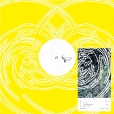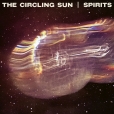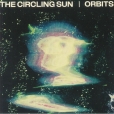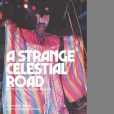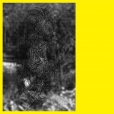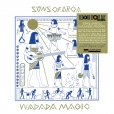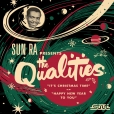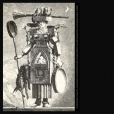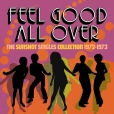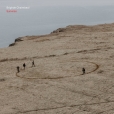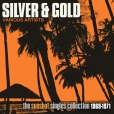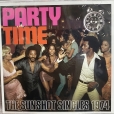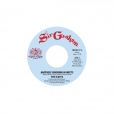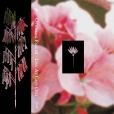Your basket is empty

Knockout, anthemic rare groove, from the 1979 album Life, Love And Harmony. Ultra-jazzy, classy, and exultant, this is Nancy Wilson at her very best. She even throws in a quickfire Louis Armstrong impression. That’s John Klemmer playing saxophone.
Backed with The End of Our Love, a northern soul floor-filler from 1968, hard to come by.
Ace.
‘A hard-grooving, vividly evocative EP, deeply rooted in nineties drum & bass, by this Milan-based, Brazilian producer.
‘The original mix of Dynamo rotates its vast spinning coil through a landscape of cavernous basslines and spectral vocals; then Etch fires up a full jungle do-over.
‘Breath - Dance enacts and probes a psycho-physical push-and-pull, alternating caustic breaks with ambient introspection.’
Fresh homage to Pharoah, Alice, Ra, and co, from an all-star Kiwi line-up.
‘Each instrument seems to be in orbit around the concept of symbiotic synergy, and everyone is given equal space to shine: from a psychedelic Korg, to a delirious saxophone or the gentle ripples of a harp. There’s a huge array of keyboards, with a standout acoustic piano solo by Guy Harrison on Plume. The wind section delivers ecstatic saxophone riffs, futtering flutes and solid horn choruses throughout. Percussion, vibraphone and acoustic bass lay the foundations. A full choir performs arrangements by Matt Hunter.’
Big Hands re-united with trumpeter Abraham Parker.
Trialled triumphantly in recent live shows, the opener comes good on the promise of the duo’s triumphant debut for Trule: gliding, hypnotic, and moody, with rueful, burnished brass interjections riding dubwise steppers.
Then a pair of distressed, halftempo d&b rhythms: a call to arms, and a troubled circling of the wagons. Waltz For Matis winds up proceedings with a deep, spooked Fourth World excursion, with skittering marimba.
Another ace EP.
‘In an age when any old modal groove with a tambura drone pasted on is marketed as spiritual jazz, Kingsport, Tennessee born Zoh Amba is the real deal…
‘Opening track Fruit Gathering is a brief aubade to the Holy Spirit, weeping with a tremulous vulnerability recalling Ayler at his most tender and melodic… On the album’s more expansive tunes, her quartet plugs into the tumultuous swells and raging energy of late 1960s US free jazz exemplified by players such as Frank Wright and Noah Howard, which built on the intensity of John Coltrane’s later, spiritually driven exhortations. Here, Amba pushes past low, guttural blasts to altissimo shrieks and the screaming multiphonics pioneered by Pharaoh Sanders during his tenure with Coltrane.
‘On Champa Flower, Amba connects with her Tennessee roots, picking and strumming at an acoustic guitar while cymbals shimmer and bass throbs. Joining the dots between folk, American primitive, pastoral psychedelia and 2000s free folk, she proposes an alternative living continuum of American devotional music. Most affecting, though, are the three solo meditations on which she plays piano with her right hand and sax with her left. Captured in lo-fi on a Zoom recorder, and ending abruptly as though suddenly out of batteries, they’re intimate glimpses of a soul in motion’ (Daniel Spicer, The Wire).
A stirring, percussive four-tracker. Wintry and submersible; smudged with mist, then silvered and clear as a bell, by turns. Bitten Dream is dark, atmospheric, hypnotic; Via Tekh summons vintage Objekt; Shrine despatches twisted 8-bit granularity into early Livity Sound and Carrier territory; lulling, ambient Catharsis lets go.
Likely recorded in Chicago around 1956; originally released on Saturn. Ra is co-composer of both sides; it could be him playing the harmonium.
‘I had two main vocal groups at the time,’ Ra once recalled. ‘One was called the Cosmic Echoes. And the Cosmic Rays, too. It was around the same time that John Gilmore joined the band. I saw the possibility that they could be really great so I began to coach them; they were connected with a barber shop, but I taught them other things.’ ‘We’d go down to the barber shops and rehearse some groups,’ added John Gilmore. ‘Sun Ra had them singin’ some beautiful stuff. I think he probably was saving them from themselves. He heard them, heard their potential, snatched them off the street, and started making them do something constructive.’
‘This improvised, telepathic collaboration between underground legend Rob Mazurek and modular-synth maestro Alberto Novello is a dizzying, psychedelic space ritual. A delicate weft of harmony and melody on trumpet — plus atmospheric bells and samples — rides a loose rhythmic, timbral magic carpet, way out into uncharted dimensions of sound.’
A mouth-watering collaboration; plus flips from Al Wootton and Ottomani Parker.
‘The opener Last Breath is a late-hour pelter: relentlessly moody and hypnotic, with heaving sub-bass pulses. Tunnel Drift switches lanes with its distinctive tech-stepping 90’s throwback style; a forward-thinking take on a nostalgic sound.
‘Al Wootton’s contribution is characteristically fresh and inventive dubbed-out house, with his signature layering of atmospheric textures, and a deep and groovy bassline.
‘After a blissful opening, the Ottomani Parker excursion overlays driving percussion with horns, keys and live hand-drumming; an uplifting finale.’
This is terrific; warmly recommended.
‘Brìghde Chaimbeul is a leading purveyor of celtic experimentalism and a master of the Scottish smallpipes; a bellows-blown, mellower cousin to the famous Highland bagpipes. A native Gaelic speaker, Brìghde roots her music in her language and culture. She rose to prominence as a prodigy of traditional music, but has since begun a journey to take the smallpipes into unchartered territory. She has devised a unique way or arranging for pipe music that emphasises the rich textural drones of the instrument; the constancy of sound that creates a trance-like atmosphere, played with enticing virtuosic liquidity. She draws inspiration from the world of interconnected piping traditions, but her most recent album brings in influence from ambient, avant garde and electronic music.’
